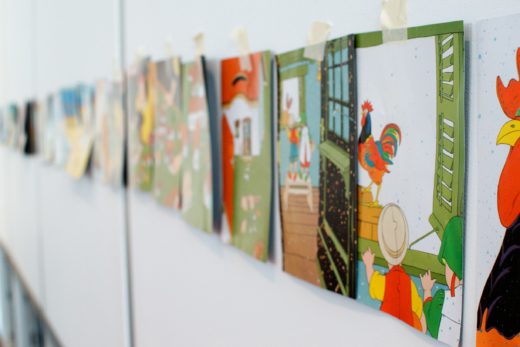Graphical composition of electronic music from 1959 by Daphne Oram. On display at the Science Museum in London.

Daphne Oram (31 December 1925 – 5 January 2003) was a British composer and electronic musician. She was one of the first British composers to produce electronic sound and was a pioneer of musique concrète in the UK.[1] As a co-founder of the BBC Radiophonic Workshop, she became a central figure in the evolution of electronic music.

She was the creator of the Oramics technique for creating electronic sounds using drawn sound. Besides being a musical innovator, she was the first woman to independently direct and set up a personal electronic music studio, and the first woman to design and construct an electronic musical instrument.

Oramics is a drawn sound technique that involves drawing directly onto 35mm film stock. Shapes and designs etched into the film strips are read by photoelectric cells and transformed into sounds. According to Oram, “Every nuance, every subtlety of phrasing, every tone gradation or pitch inflection must be possible just by a change in the written form.” The Oramics technique and the flexibility of control over the nuances of sound was an altogether new and innovative approach to music production



